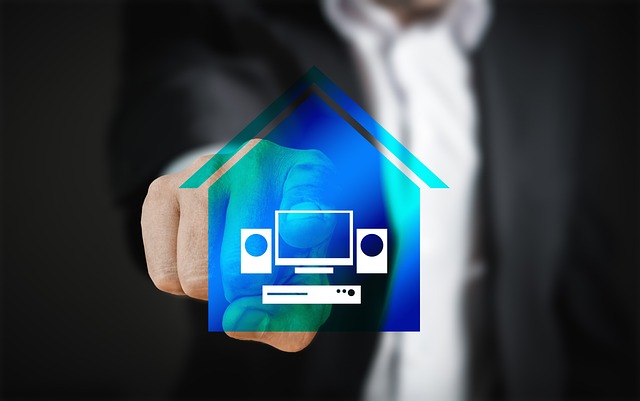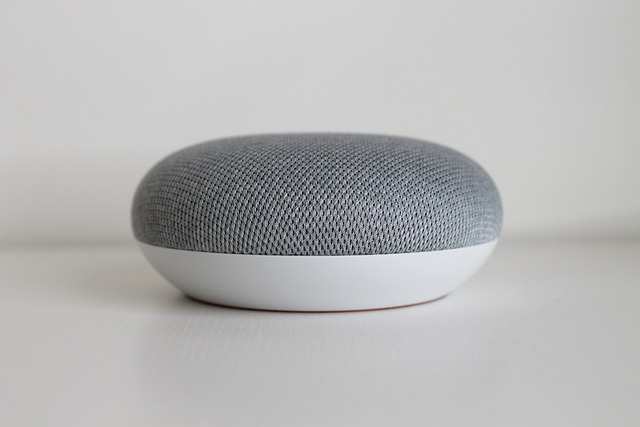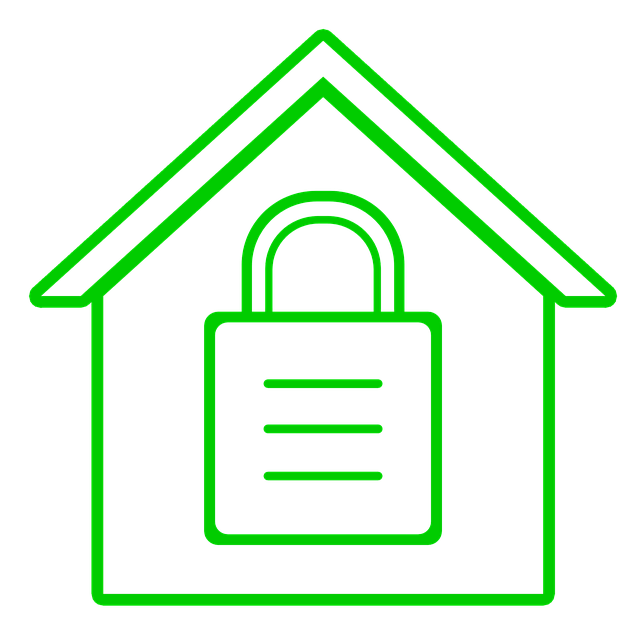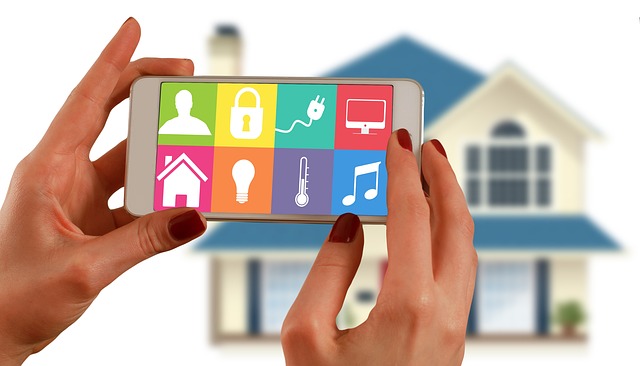Smart home devices are revolutionizing home protection by offering intuitive control and peace of mind. Beginners can enhance their home safety by identifying key areas like entry points, surveillance, and environmental monitoring, then integrating devices such as smart door locks and security cameras via central hubs. This approach provides 24/7 monitoring, real-time alerts, and remote access through smartphones. Essential tools for newcomers include a smart doorbell camera, motion-sensor lights, and smart plugs to deter intruders and maintain security while enjoying modern home automation. A step-by-step guide recommends prioritizing high-risk areas, updating security protocols, ensuring compatibility among devices, and integrating diverse components for a comprehensive safety system.
Looking to fortify your home with cutting-edge protection? Discover the transformative power of smart home devices in this comprehensive guide. We’ll demystify the world of home safety technology, offering a beginner’s guide to integrating smart protection seamlessly. From unlocking new levels of security to enhancing your peace of mind, learn how essential tools like cameras, locks, and alarms can be tailored to your needs. Dive into our step-by-step implementation process and unlock the secrets to customizing your smart home for optimal safety.
- Understanding Smart Home Devices: Unlocking a New Level of Home Protection
- Benefits of Integrating Smart Safety Technology in Your Home
- Essential Smart Home Protection Tools for Beginners
- Enhancing Home Security: A Step-by-Step Guide to Smart Device Implementation
- Customizing Your Smart Home: Tips and Tricks for Optimal Protection
Understanding Smart Home Devices: Unlocking a New Level of Home Protection

Smart home devices are revolutionizing the way we think about and approach home protection. These technologies offer a new level of control and peace of mind, enabling users to enhance their home safety with just a tap or voice command. For beginners venturing into the world of smart safety, understanding these devices can seem daunting, but it’s a simple process of layering technology to suit your needs.
A beginners guide to smart safety starts with identifying key areas for protection: entry points, surveillance, and environmental monitoring. Smart door locks and security cameras are great starting points, providing real-time alerts and remote access. These devices can be easily integrated into a central system using smart hubs, allowing for seamless control and automation. By using smart home protection, you’re not just securing your space; you’re embracing a more efficient, interconnected way of living.
Benefits of Integrating Smart Safety Technology in Your Home

Integrating smart safety technology into your home offers a multitude of benefits that go beyond basic security. Smart home devices empower you with real-time monitoring and control, allowing you to stay informed and connected 24/7. With just a few swipes on your smartphone, you can check in on your property, receive alerts about suspicious activities, and even arm or disarm your security system remotely. This provides peace of mind, knowing that your home is protected, no matter where you are.
Beyond convenience, smart safety technology enhances home safety by leveraging advanced features like motion detection, glass-break sensors, and intelligent alarm systems. These devices can differentiate between normal activities and potential threats, reducing false alarms and ensuring a swift response when needed. For beginners looking to upgrade their home protection, using smart devices offers an accessible entry point into the world of comprehensive security, making it easier than ever to safeguard your most valuable possessions and loved ones.
Essential Smart Home Protection Tools for Beginners

For those new to the world of smart home devices, establishing a robust security system might seem daunting. However, getting started with just a few essential tools can greatly enhance your home safety and provide peace of mind. A beginners guide to smart safety should focus on core components that offer comprehensive protection.
Consider implementing a reliable smart doorbell camera to monitor visitors and deter potential intruders. Pair this with motion-sensor lights that automatically activate when movement is detected, creating an off-putting environment for unwanted guests. Additionally, basic home automation through smart plugs allows you to remotely control and schedule appliances, making your home appear occupied even when empty, thereby increasing security.
Enhancing Home Security: A Step-by-Step Guide to Smart Device Implementation
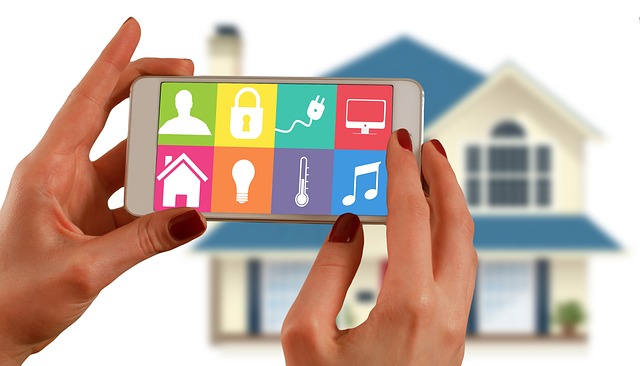
Implementing smart home devices is a fantastic way to enhance your home’s security and create a safer living environment. Here’s a step-by-step guide for beginners looking to integrate smart safety technology into their homes:
1. Identify Key Areas: Start by assessing your home and pinpointing potential vulnerabilities. Common areas of focus include entry points like doors and windows, as well as spaces where valuable assets are stored. Smart locks and motion sensors can be strategically placed to monitor these areas, providing early alerts for any unauthorized access attempts.
2. Choose the Right Devices: With numerous smart home protection options available, select devices tailored to your specific needs. For instance, smart cameras offer remote monitoring capabilities, allowing you to keep an eye on your property via live video feeds. Motion-activated lights can deter intruders, while smart smoke and carbon monoxide detectors provide peace of mind by alerting you to potential hazards.
3. Create a Network: Ensure your chosen devices are compatible and can communicate with each other seamlessly. Most smart home systems operate through a central hub or gateway device that connects to your home network. Setting up this network allows for centralized control, enabling you to manage all your smart safety features from a single app or platform.
4. Secure Your Network: As with any technology, securing your smart home network is vital. Use strong passwords and encryption protocols to protect your devices and data. Regularly update firmware and software to patch security vulnerabilities, ensuring your home safety system remains robust against potential cyber threats.
Customizing Your Smart Home: Tips and Tricks for Optimal Protection

Customizing Your Smart Home: Tips and Tricks for Optimal Protection
For many, the appeal of smart home devices lies in their ability to enhance home safety through remote monitoring and automated responses. However, achieving optimal protection goes beyond simply installing these technologies. A beginners guide to smart safety suggests focusing on tailoring your smart home setup to fit your specific needs and lifestyle. Start by evaluating which areas require the most attention—like entry points or vulnerable spaces—and prioritize deploying smart devices accordingly.
Remember that using smart devices effectively involves more than just setting them up. Regularly review and update your security protocols, ensure device compatibility and firmware updates, and consider integrating different smart home devices for a holistic approach to home protection. By customizing your smart home experience, you can transform it from a collection of gadgets to a robust safety system that keeps your home secure 24/7.
